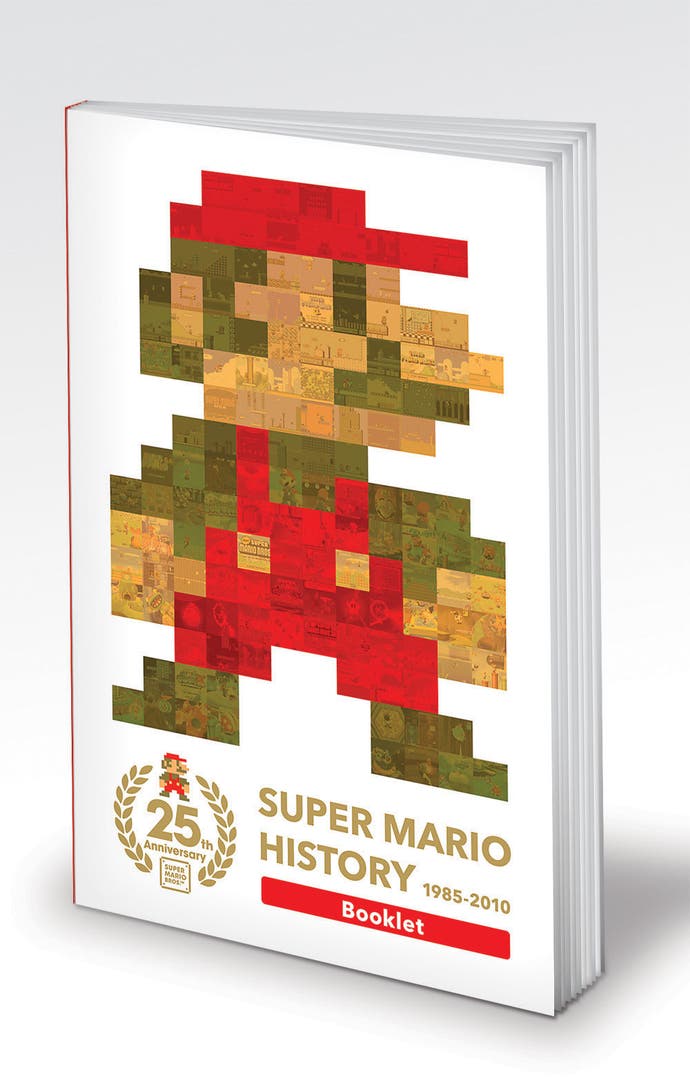Super Mario All-Stars
Crystal castles.
One tragic casualty of the game industry's creep towards digital distribution is videogame packaging.
Games are, by definition, ethereal: arcane lines of code that push clusters of coloured light from pixel to pixel on electronic displays. The boxes they come in help ground these esoteric journeys of mind and screen in reality. They bottle our experiences. We can read their labels, share specimens with each other and feel their weight in our hands – none of which is possible with a file downloaded to a hard drive.
Boxes make the intangible tangible. Digital distribution offers convenience, but it does so at the expense of experience. And Nintendo has always understood the value of experience.
Super Mario All-Stars, which bundles together four of the series' formative 8-bit titles, enjoys packaging that is both commemorative and celebratory. The smooth, dusky, Famicom-mauve cardboard box is emblazoned with a gold wreath, inside which stands a Mario sprite, facing right: poised and ready, as ever, to run off into the inviting distance. Understated but thoughtful, like a Criterion Collection version of a cherished children's film, it strikes a balance between playfulness and austerity.
Even Nintendo doesn't indulge itself in as many commemorative re-releases as its cinematic counterpart, Disney. But Super Mario Bros. is no run-of-the-mill classic. For over 20 years it remained the best-selling game ever, shifting over 40 million copies worldwide and popularising a character that, by the 1990s, had become more recognisable amongst American schoolchildren than Mickey Mouse.
Moreover, Super Mario Bros.' iconography has come to define games in popular culture. The red splash of Mario's plumber costume, the unfashionable cap and moustache, Koji Kondo's irrepressibly joyful theme tune, the squat, shifty-eyed Goombas and the spike-backed kidnapper, Bowser, all symbolise video games to much of the world. Mario's most important game is 25 years old; we should absolutely throw him a party.

Physically, the re-release has been treated with an appropriate degree of care and attention. Inside the box, there's a compilation soundtrack of music from the series, along with sound effects – trills and warbles that can be pinned to every action and reaction in the game from memory. Likewise, a booklet outlining the origins of the series, and featuring comments from creator Shigeru Miyamoto and never-before-seen artwork from its development, is a welcome bonus.
Sadly, in the game, contemporary spit and polish is nowhere to be seen. This is, instead, a ROM dump of the Super Nintendo title, Super Mario All-Stars, which eschews Mario's debut in Donkey Kong and the subsequent arcade game Mario Bros. and instead bundles Super Mario Bros. and its sequels together, repainted in 16-bit sprites.
The code remains untouched from its debut 17 years ago; the copyright line on the title screen reads 1993; the on-screen instructions are written for a SNES pad, not a Wii controller, Classic or otherwise. Without 60hz support, the games must be played bordered and with the slightly fuzzy definition that plagues emulated SNES games when played on a modern flat-screen television.
Does any of this matter? Yes and no. No, because each of the four games on offer still sparkles with creativity and assured design; they're not mere museum pieces, picked out as crucial stages in gaming's evolution, but also as vibrant, relevant and exciting experiences today. Yes, because, when throwing someone a 25th birthday party, it's a little stingy and awkward to put up the same decorations you used for their 8th birthday party.
Presentation aside, each game here remains a triumph, the SNES incarnations arguably preferable to the NES originals thanks mainly to the convenience offered by the save slots.

.jpg?width=291&height=164&fit=crop&quality=80&format=jpg&auto=webp)






